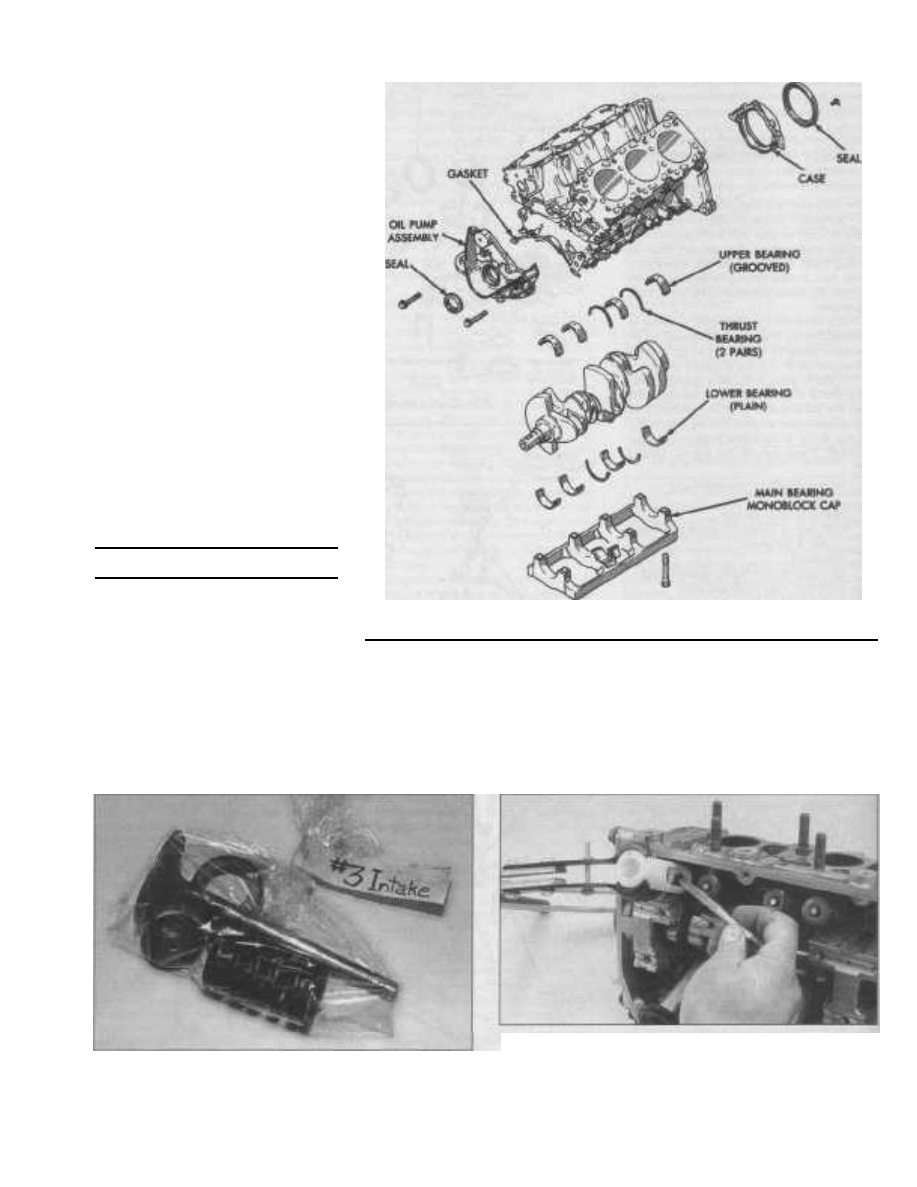Chrysler Cirrus, Dodge Stratus, Plymouth Breeze Haynes. Manual - part 14

2C-10
Chapter 2 Part C General engine overhaul procedures
9.5c Engine block components - V6 engine
Water pump
Cylinder head(s)
Oil pan and oil pickup tube
Oil pump
Balance shaft carrier (2.4L four-cylinder
engine)
Piston/connecting rod assemblies
Crankshaft
6
Before beginning the disassembly and
overhaul procedures, make sure the following
items are available. Also, refer to Engine
overhaul - reassembly sequence for a li st of
tools and materials needed for engine
reassembly.
Common hand tools
Small cardboard boxes or plastic bags
for storing parts
Gasket scraper
Ridge reamer
Micrometers
Telescoping gauges
Dial indicator set
Valve spring compressor
Cylinder surfacing hone
Piston ring groove cleaning tool
Electric drill motor
Tap and die set
Wire brushes
Oil gallery brushes
Cleaning solvent
10 Cylinder head - disassembly
Refer to illustrations 10.2, 10.3, 10.4a, 10.4b
and 10.4c
Note: New and rebuilt cylinder heads are
commonly available for most engines at deal-
erships and auto parts stores. Due to the fact
that some specialized tools are necessary for
the disassembly and inspection procedures,
and replacement parts may not be readily
available, it may be more practical and eco-
nomical for the home mechanic to purchase a
replacement head rather than taking the time
to disassemble, inspect and recondition the
original.
1
Cylinder head disassembly involves
removal of the intake and exhaust valves and
related components. If they're still in place,
remove the rocker arm shafts and camshaft,
on the SOHC engine (refer to the appropriate
Part of Chapter 2) or the bearing caps,
camshafts, rocker arms and lash adjusters,
on the DOHC engine (see Chapter 2A). Label
the parts or store them separately so they
can be reinstalled in their original locations.
2
Before the valves are removed, arrange
to label and store them, along with their
related components, so they can be kept
separate and reinstalled in the same valve
guides they are removed from (see illustra-
tion).
10.2 A small plastic bag with an appropriate label can be used to
store the valvetrain components so they don't get mixed up
10.3 After compressing the valve spring, use a magnet (shown) or
needle-nose pliers to extract the valve keepers - a valve spring
compressor adapter, such as the one shown, will be needed to
compress the valve spring on this type of cylinder head